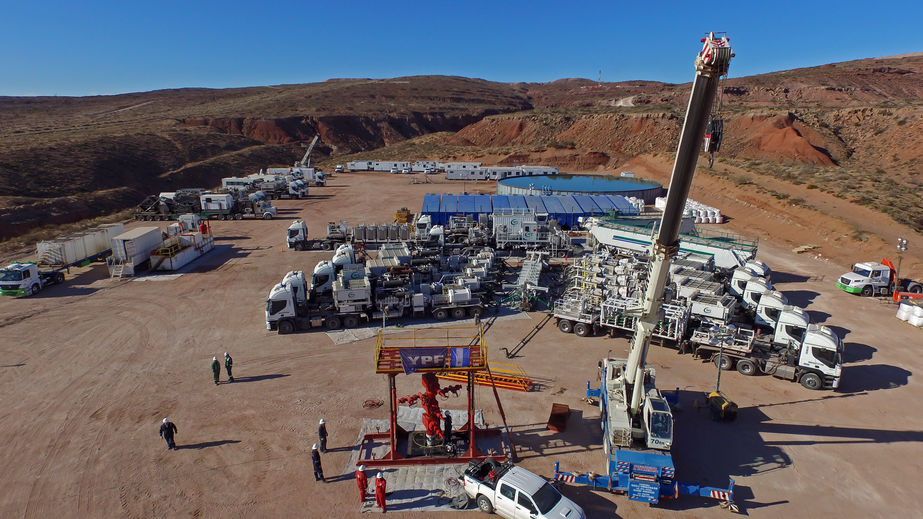The development of unconventionals in Argentina
Argentina is known worldwide for its football, asado, mate, dulce de leche, its extensive pampas, and tourist resources. It is rarely recognized as an oil and gas producing country, despite having a long history of over one hundred years in the exploration and production of conventional oil and gas. In recent years, the country has added a new attraction: the development of unconventionals, which were known for decades but had no possibility of being exploited.
Argentina has currently the second largest unconventional gas reserve in the world and the fourth largest global unconventional oil reserve. Its unconventional reserve, Vaca Muerta, began its development mainly along YPF, the main energy company with the participation of the national state, and thus it was possible to develop the technology and have the means to explore and exploit these reserves in a profitable way. YPF, being a pioneer along with other private companies, has managed to capitalize on all this knowledge for the country, and today, other companies follow its example accompanying the learning curve, developing qualified personnel, technology, local suppliers, and improving costs. The development of the technology and knowledge for the characteristics of this training played a key role in the last five years.
These unconventional reserves are and will be an attraction for both national and foreign investors, in addition to being strategic for the country’s development, since they follow an accompanying strategy for energetic transition.
Breaking the breakeven
The development of unconventionals (NOC, which is the acronym we usually use in Argentina) represents a challenge for all oil and gas operating companies, not only in Argentina but also worldwide. At the same time, they also represent a challenge for all the companies that develop technologies and provide specialized services for this industry.
Even though unconventionals have been known for decades, the breakeven regarding the international oil value has recently been broken. In Argentina, it was broken even closer in time, referring of course to historical average values, without entering into the circumstantial context of the COVID-19 pandemic. During this situation of the pandemic, the country is taking measures of an internal oil barrel price, called “Criollo barrel”. This price would allow us to continue the exploitation of unconventionals in an almost normal way for internal supply.
The behavior of unconventionals is unpredictable
Companies today are still seeking greater efficiency, so they are reducing their extraction cost and trying to clear up any future risks.
To understand the difficulty of NOCs a little more, we must start by talking about the conventional ones. The behavior of conventional wells can be described by known and relatively simple physical laws. For example, inferred pump fill control from a downhole card – widely used in mechanical pumping – has little application in unconventional ones so far. The physical laws applied in conventional are not applicable to highly deviated wells such as those found in NOCs. Another example, in conventional wells, a blockage can be detected by several different methods unambiguously. In NOCs, all methods fail.
The behavior of NOCs is unpredictable, and the known laws of conventional wells cannot be applied. That is why, for NOCs, the gradual enrichment of statistics and a higher amount of information, which allows for the application of these statistics and data science in depth, have been key to their development.
Accelerated learning course
The learning curve in Vaca Muerta has been extraordinary, from explorative wells in 2010, up to now, with vertical wells to the target (3.000mts) and then horizontal wells (branches of more than 2.000mts) with more than fifty stages of fracture in some cases. Simultaneously, reservists and production engineers have been acquiring a vast knowledge of how to manage the flow back, how to produce the well in its natural emergence stage, the switch to artificial lifting equipment, the selection of appropriate artificial lifting equipment, paraffin and sand management, hole erosion, interference between wells, high non-localized losses, etc. These are just a few of the challenges that companies have had to learn to manage in few years, there others, such as the provision of special sands and the logistics of sand and water to reach the fracture points, which have represented a challenge, even having imported knowledge from other industries.
The good news regarding NOCs is that any knowledge or technology that is developed specifically for these issues is applicable to any other scenario as well (for example, conventional), thus NOCs function as a fast learning course, as they rapidly enhance the practices that the oil industry has used for over hundred years.
What do we as Yokogawa provide for the Oil & Gas industry? Watch out for part 2 of this article!




